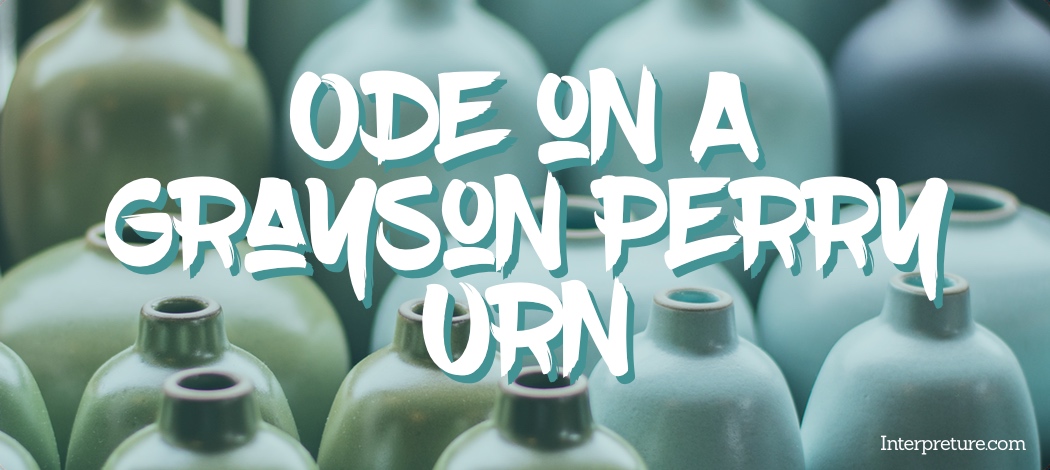‘An Easy Passage’ by Julia Copus is a poem which centres around the journey of a young girl sneaking into her house, presented in a surreal format which helps to create a distinctive narrative voice and raise ideas regarding childhood transitions and development. Copus was born in London in 1969 and is very interested in rhythmic styles of poetry, and subjects of her work often including family relationships, which is explored to an extent in ‘An Easy Passage’.
This poem is part of the set of prescribed poems that could be included in the Edexcel English Literature exam, meaning that it is important to study, understand and revise this poem. Click here to see all the prescribed poems from the ‘Poems of the Decade’ collection.

Interpreture gives ‘An Easy Passage’ a difficulty rating of 4, meaning that it is deemed to be a relatively difficult poem. The meaning is somewhat challenging to understand at first, not helped by the very dense structure which makes it difficult to separate out different sections. As such, these different factors mean that extra focus and attention needs to be made to ensure a full understanding of the poem.
‘An Easy Passage’
The poem title can be interpreted as alluding to the idea of either a ‘safe’ passage or a ‘rite of passage’ which are both commonly associated with the idea of growing up and transitioning from one experience and existence to another, either metaphorically or physically. As such, a reader is likely to have a general accurate understanding of what the poem will look at. This could help evoke some of their own ideas regarding this subject, which could be quite effective because it would allow a reader to contrast their own experiences with those described in the poem, and judge them as either being more or less lenient or suitable. However, a reader may question the use of “Easy” and perhaps consider that it is being described in a deliberately misleading way.

Poem Structure
The most notable aspect of the structure of this poem is that it is free verse in a single stanza. This choice helps to impart a sense of fluidity and movement to the poem, and by extension its subject matter, perhaps causing a reader to see it as supporting the title with the idea of an ‘easy passage’ rather than one which is difficult or hard to understand. The line lengths are generally similar, although not as exact as some other poems in the anthology (such as ‘From the Journal of a Disappointed Man’), which reduces the sense of it being a singular block of text, and could help a readers understanding and reading of the poem. That said, it still could appear daunting and challenging, evoking a similar sense and emotion to those which are facing a ‘rite of passage’ into maturity and experience.
Also important to the structure of this poem is the lack of sentences. While there is a wide variety of punctuation and extensive use of commas, the first sentence continues for nearly a third of the poem, and the final sentence for the last third, with only five sentences in total. The decision to have long sentences sandwich shorter ones in the middle of the poem could be interpreted as helping to demonstrate the shift in narrative and development of the girl, as she continues her ‘passage’ from innocence to experience. This turning point is particularly notable for the rhetorical question, which acts as a natural turning point as after this the poem returns to the extended sentences. Some readers may interpret this structure as being representative of a childhood, then a turbulent adolescence, then returning to a more stable adulthood.
As mentioned, the range of punctuation in ‘An Easy Passage’ is interesting because there are many hyphens, commas and semi colons used. This is to be expected for the longer sentences, as many of these examples could be seen as replacing full stops and full caesura so as to not break the continuous feel of the poem. Notably, there is the combination of both a full stop and a hyphen mid way through the poem at “on her thighs. – What can” which helps to add an extended and distinctive pause, further supporting the idea that the middle of the poem helps to act as a transition point in the narrative through the use of structure.
Poetic Techniques
‘An Easy Passage’ is written in the third person and the lack of dialogue creates a corresponding lack of variety in pronouns, with only uses of “her” and “she” in the poem. This creates distance from the events being described with the more observational tone, which could be interpreted as making it feel more story-like. Stories are often used in relation to growing up, which would therefore link with the idea of a rite of passage. The specific decision to have female characters could be interpreted by some readers to show a more personal connection to the poet, therefore making a reader feel like the poem has a stronger message.
The semantic field of the body is notable throughout the poem, with examples typically drawn from two sources. The first is the physical descriptions of the girl and her friend, with a focus on describing different parts of her and what she is wearing. The second main source is through descriptions of their surrounding environment, such as the “warm flank of the house” and “eye of the street”. The humanising descriptions of these surroundings are interesting because they encourage the idea of onlookers to the scene, further increasing the sense of importance of these actions.
Overall, the poem lacks any key identifiers as to who the girls are, or who the different workers are that are being described. This is most likely to be so that the descriptions could be seen as applying to a whole range of people, making the poem more universal in its tone and approach. While this can be seen as positive for the girls, for the “flush-faced secretary” it could be negative as it highlights the more saddening aspects of society, such as having dreams and ideas that are likely to ever come to fruition. This is most notable with the reference to the “astrology column” and while some readers may view this reference positively, others would see it as demonstrating unrealistic hopes.
Important Lines
“the sharp drop of the stairwell”
The adjective “sharp” is a distinctive choice which has connotations of precision and accuracy, but also of potential pain and suffering, perhaps highlighting the potential impacts of these transitions and passages. In addition, the idea of the stairwell and stairs could be interpreted as both a physical and mental transition of childhood to adolescence and adulthood.
“a square of petrified beach”
Squares are uniform shapes which may be seen as jarring when compared against natural and fluid transitions and experiences being described in the poem. The use of “petrified” could have two interpretations, either literal petrification of natural forms into a stone like material, or the emotion felt by the beach (the gravel driveway) at seeing the young girl on the rooftop.
“flash of armaments”
“Armaments” are military weapons and equipment, so describing a “flash” links to them being fired, bringing one of the only references to weaponry and violence to the poem. Notably this is at the end of the poem, which could be interpreted by some readers at signalling the potential for future conflict.
‘An Easy Passage’ Key Themes
- Identity: Concepts of personal identity are a key part of ‘An Easy Passage’ due to the idea of self-development and growing up, claiming an identity within the world. This is also a key aspect of many cultures view on the idea of a rite of passage.
- Childhood: This theme is brought into the poem through the ideas of transition away from childhood, while still retaining some imagery in the poem such as the physical descriptions of the girls.
- Society and Culture: It can be interpreted that while the poem considers cultural ideas such as growing up and rites of passage, there are also broader criticisms of the concept of adulthood such as the ‘drab’ working worlds and the plans and dreams which constantly fail to come to fruition.
Quick Focus Questions
- What impact does the use of present tense have on a reader’s interpretation of the poem?
- How are transitions from different positions (crouching to standing, indoors to outdoors) used in an effective way?
- In what ways could ‘An Easy Passage’ be interpreted as a surreal poem?
While ‘An Easy Passage’ can be quite a challenging poem to understand because of the relatively abstract and surreal initial impression, there is a whole range of interesting structure and language devices which enable lots of comparison with other poems. For example, the long single stanza in this poem could be contrasted with the flowing stanzas of ‘Look We Have Coming to Dover!’ or the broken stanzas of ‘History’, while the themes and language could be compared with ‘To My Nine-Year-Old Self’.







3 Comments
Great analysis yet again! This certainly did do wonders to my understanding of the poem’s message of childhood vs adulthood, which seems to be a popular theme in the Poems of the Decade. Just one quick question from me – Since you mentioned the rhetorical question and other structural devices as creating a natural turning point for the narrator to move from childhood -> adolescence -> adulthood, could it be possible that the flush-faced secretary is the narrator in the future who looks back at her childhood? Thanks!
It could certainly be possible; as with all literature, any interpretation is valid providing there is a supporting argument. Reading this poem again made me think about how clearly all-knowing the narrator is (e.g. the mix of understanding emotions, thoughts and reasoning), which supports the idea that they are speaking from personal experience. That said, my personal interpretation of the description “looks up now … at a girl” makes it feels very much in the present. If it had been “looks down now” or even “looks across” then I think this could have encouraged more readers to pick up on a similar idea to yours.
You have quite possible saved my A levels thank you all so much